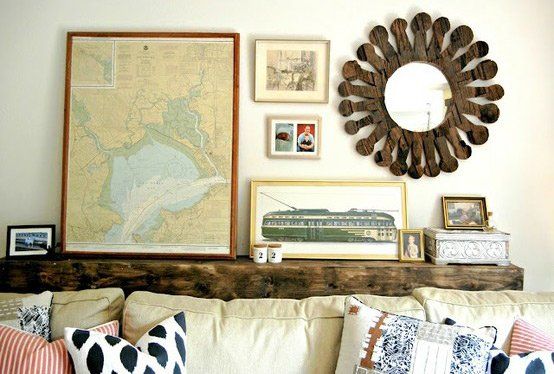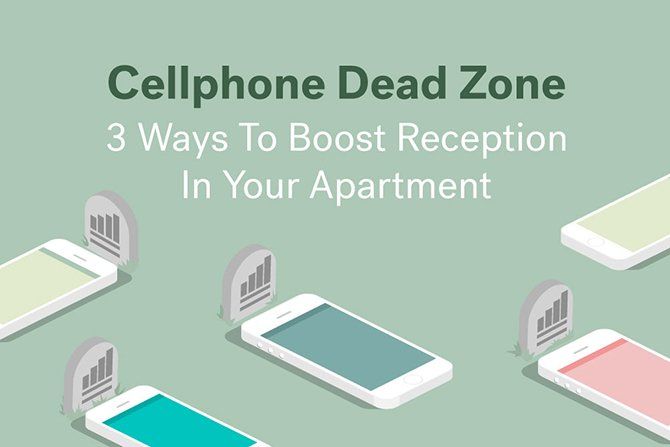March 14, 2016
Getting ready to move away from home and into your first apartment is super exciting. However, it can also be incredibly intimidating. After all, renting an apartment is a pretty big deal, and there are a lot of things to consider. Even people who have rented before can get caught up in the process of finding a new place – when it’s your first time, there can be enough new information to make your head spin. Here are 11 things to think about during your apartment-hunting process that will, hopefully, make the whole thing much easier: 1. Upfront Costs Even first-time renters know they’re going to be responsible for their monthly rent, but it’s easy to forget about the upfront costs of renting an apartment if you’ve never done it before. In addition to the monthly costs of apartment living, you’ll almost always have to pay up before you move in – often, before you can even sign the lease. Plan ahead to avoid new-place sticker shock. Nearly all apartment companies will require that you pay a security deposit before you move in. This protects the landlord in case you trash your apartment and skip town. As long as you don’t do that, you should get it back once your lease is up. In addition to the deposit, you may have to pay application fees, or even one month’s rent, before you can get settled into your new place. 2. Long-Term Costs Rent isn’t the only thing you’ll have to pay month-to-month, either. You’ll also have to pay for utilities like heat, gas and electricity. Different buildings have different rules about what you’re expected to pay and what is covered in your rent. If you need to pay for it, you’ll also need to set it up – be ready to reach out to utilities companies to get the services put in your name. Don’t forget renter’s insurance! Some landlords actually require tenants to get a renter’s policy, but you should whether it’s mandated or not. Insurance policies protect you in the case of accidental damage, theft, and disaster. It usually doesn’t cost all that much per month, so you should definitely fit safety net into your budget. 3. What You Need Furnishing a brand-new apartment is super exciting, and you’re probably full of ideas about how you want your new place to look. Before you go wild with your decoration schemes, however, you must make sure you have the basic furniture you’ll need to live. Eating take-out on the floor feels very cool and devil-may-care … for about a day. After that, you’ll wish you had a table. Here’s a quick list of the basic furniture you’ll have to bring in: A bed, a couch, a table, and some chairs. In addition, there are little around the house items you probably won’t have, but will definitely want. These include things like towels, shower curtains, and utensils. Cookware is a must, as well, unless you want to be perpetually tied to delivery and carry-out food. 4. What You Don’t Need You might be tempted to take every little knickknack and item you’ve ever collected with you to your new place. Although this might make your apartment feel well-stocked early on, you’re sure to regret it once you start actually decorating. All the junk you’re packing up now will feel like a complete pain when it gets in the way of having a tidy, put-together place. Instead of moving everything from back home with you when you head into your first apartment, use moving as a chance to purge. Have an honest conversation with yourself about whether you’re holding on to items because they’re useful, or because you’re reluctant to let go. Donate, throw away, or recycle anything you don’t really need – you’ll be glad you did down the line. 5. Lease Terms A lease is often the first legal document a young adult encounters. Although this does make the process a little bit stressful, it also makes it great practice for other contracts later on in life. Learning how to read complicated legal text is a valuable skill, and skimming your lease is an awful idea. Carefully read the entire document, and don’t be afraid to ask questions if there’s something you don’t understand. If you want to be extra certain about the lease before you sign it, ask the landlord if you can have a few days to look it over. Then ask someone you trust, like a family member or experienced friend, if he or she can look it over with you. If anyone in your life is experienced with legal matters (particularly housing issues), they should be able to help you fully understand any confusing clauses. 6. Roommate Worries If you’re moving in with roommates, make sure everyone you’re going to be living with is signing the lease. One or more roommates avoiding the lease spells out bad news later on – if they stop paying rent or decide to up and leave, there’s nothing you can do except pay on their behalf. If you’re thinking of living with someone who refuses to get on the lease, pick a different roommate. 7. Pets Bringing a furry friend with you to your new place? Make sure you talk to your landlord about your pet – or pets – before you sign the lease or move in. Even if you know your building allows pets, it might have restrictions about weight or breed. In addition, most pet-friendly buildings require you to pay a pet deposit, or add an extra pet fee onto your rent. In addition, make sure your apartment has plenty of room for Fido or Felix. If you’re bringing in a dog with lots of energy, it will need plenty of room to run around, and to be exercised outside regularly. Even cats call for extra space – have a plan for where you’ll put things like food, water, and the litter box before you decide on a unit. 8. Location, Location, Location Before you pick an apartment building, make sure you’ve given real thought to where it’s located. Ideally, you’ll be close to all of the essential shops and services you’ll need, like grocery stores and restaurants. How close depends on your lifestyle. If you’re comfortable driving most places, within a couple of miles should do. If you’d rather walk, try to make sure you’re no more than a mile away from the important stuff. 9. Moving Plans Moving is hard work, and you’re probably not going to be able to do it on your own. If you have a lot of friends who are free on your move-in date, ask them if they’d be willing to help you haul your stuff into your new place. This is going to be your cheapest option – traditional friend payment is pizza and beer, and the promise to help out next time they move. If your friends are busy, you may want to look into hiring a moving company. The great thing about these services is that the movers are professionals who have done this a thousand times before, so they’ll know exactly how to load the truck and handle the boxes. These may seem like small details, but they’ll dramatically reduce the time it takes to pack up your stuff and get it into the new apartment. 10. Organization Unless you’re moving into an apartment with an abundance of closet space, you’re probably going to need to come up with your own storage solutions. One of the very best things you can get is under-bed storage bins. As the name suggests, these slide neatly beneath your box springs and live totally out of sight. This is the perfect place to store out-of-season clothes and other small items. If the storage can’t be hidden away, try to find things that look good. One cool way you can sneak storage into your decor is to use on old trunk for your coffee table. It will look totally cool, and you can use it to store away infrequently used items. Bookshelves work well for storing things that are decorative on their own, like figurines, ornaments, and, of course, books. 11. Decoration Scheme The earlier you decide what you want to do, decoration-wise, the easier the process will be. There’s no better time to decorate an apartment than when you first move in – all of your stuff is already out of the way, and you still have all the freedom to sort your items the way you’d like. Unpacking things into their proper place is way easier than moving them later on. Take a look at different design schemes to build some inspiration for your new place. Do you want something rustic and earthy, or sleek and modern? Make lease-friendly changes before you unpack all of your stuff, so you don’t have to deal with a bunch of little items while you’re decorating. This way, your place will look like home as soon as you’re done unpacking.







